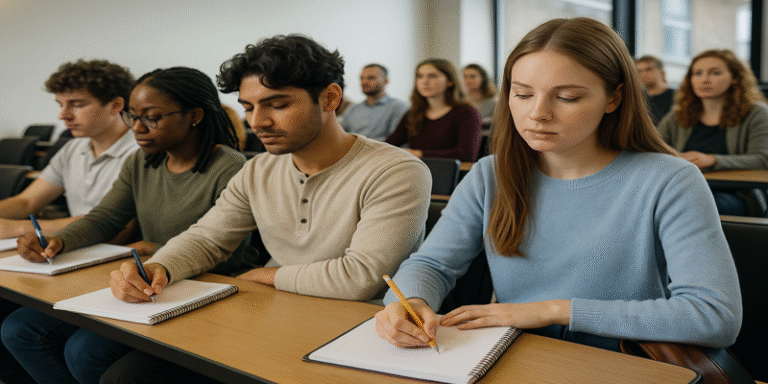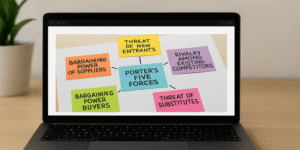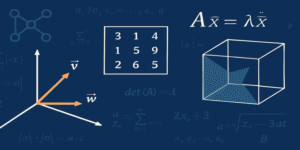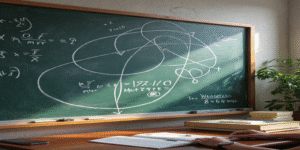In higher education, students are exposed to vast amounts of information through lectures, seminars, tutorials, and independent study. To manage this information effectively, note-taking skills are essential. Note-taking involves recording, organising, and reviewing key points so that knowledge can be retained, understood, and applied in academic tasks such as essays and exams. According to Cottrell (2019), effective note-taking supports not only memory but also critical thinking and comprehension. This article explores the importance of note-taking, different methods and strategies, the role of technology, common challenges, and its overall impact on academic achievement.
The Importance of Note-Taking
Note-taking is more than simply writing down what a lecturer says. It is a cognitive process involving listening, identifying key ideas, and summarising them in a meaningful way. Piolat et al. (2005) emphasise that note-taking encourages deeper learning by requiring students to process information actively, rather than passively.
For example, when attending a lecture on economics, a student who notes “Keynes: government spending increases demand → reduces unemployment” captures the essence of a complex theory in a concise, memorable way. Without notes, details may be forgotten quickly, as research shows that people forget up to 50% of spoken information within 24 hours (Bligh, 2000).
Moreover, note-taking is valuable for revision. Handwritten or digital notes act as personalised learning resources that condense textbooks and lectures into manageable summaries. Effective notes also aid collaboration, as they can be shared or compared with peers for clarification.
Functions of Note-Taking
Effective note-taking serves several functions in learning (Kiewra, 1985):
- Encoding function – the act of writing or typing helps students remember information through active engagement.
- Storage function – notes provide a permanent record for later review.
- External memory function – notes allow learners to offload details from working memory, freeing cognitive capacity for critical analysis.
These functions explain why students who practise structured note-taking often achieve higher academic performance (Kobayashi, 2006).
Methods of Note-Taking
There is no single best method of note-taking; rather, students must choose approaches that suit their learning style and subject matter.
The Outline Method
The outline method structures notes hierarchically using headings, subheadings, and bullet points. This approach is effective for topics with clear organisation.
Example:
- Causes of World War I
- Alliances
- Imperialism
- Nationalism
- Assassination of Archduke Ferdinand
This method promotes clarity and is easy to revise. However, it may be less effective in fast-paced lectures without a clear structure.
The Cornell Method
The Cornell system, developed at Cornell University, divides the page into three sections: main notes, cues, and a summary (Pauk & Owens, 2010). The main notes capture lecture content, the cue column highlights keywords or questions, and the summary reinforces understanding.
Example:
- Notes: “Keynes: demand-side economics → role of government.”
- Cues: “Who was Keynes? Demand management?”
- Summary: “Government intervention stabilises economy.”
This method encourages critical engagement and reflection after the lecture.
The Mapping Method
The mapping method involves creating diagrams, mind maps, or flowcharts. It is especially useful for visual learners or for subjects requiring connections between concepts.
Example: In biology, mapping the relationship between photosynthesis → glucose → respiration makes processes easier to visualise.
The Charting Method
The charting method organises information into columns and rows, ideal for comparing data. For instance, in history, students can chart the policies of different prime ministers across decades.
The Role of Technology in Note-Taking
Digital tools have transformed note-taking. Laptops, tablets, and smartphones allow students to type notes quickly, capture images, or record audio. Software such as OneNote, Evernote, and Notion enables organisation, tagging, and cloud storage.
Research by Mueller and Oppenheimer (2014) suggests that while typing allows for faster recording, handwritten notes often lead to better retention, as students must summarise instead of transcribing verbatim. A balance can therefore be achieved by combining both approaches.
Moreover, lecture capture technologies allow students to revisit recorded lectures, reducing the pressure to capture every detail in real time (Evans, 2008). However, reliance on recordings can reduce active engagement in class, making traditional note-taking still essential.
Challenges in Note-Taking
Despite its benefits, note-taking is not without difficulties.
- Speed of delivery – Lecturers often speak faster than students can write. This can lead to incomplete or messy notes.
- Identifying key ideas – Novice students may struggle to distinguish between main points and examples.
- Cognitive overload – Simultaneously listening, processing, and writing requires multitasking, which may overwhelm some learners (Piolat et al., 2005).
- Distractions – Technology can aid note-taking but also distract students with multitasking (Kay & Lauricella, 2011).
Training in note-taking strategies is therefore crucial for student success.
Strategies for Effective Note-Taking
Several strategies can improve note-taking effectiveness:
- Preparation – Reading lecture slides or assigned readings beforehand helps students anticipate key themes.
- Use of abbreviations and symbols – For example, “→” for causes, “≈” for approximately.
- Reviewing notes promptly – Revising within 24 hours improves retention (Bligh, 2000).
- Highlighting and colour coding – Helps differentiate between definitions, examples, and key terms.
- Summarisation – Writing summaries in one’s own words consolidates understanding.
- Collaboration – Comparing notes with peers fills gaps and provides multiple perspectives.
Note-Taking and Critical Thinking
Note-taking is not just a mechanical process but a step towards critical engagement with content. Effective notes allow students to question, analyse, and synthesise knowledge. For example, in a politics lecture, a student might write:
“Brexit: sovereignty vs economic stability → tension between nationalism & globalisation.”
Such notes not only record information but also demonstrate analytical connections, which are essential for essay writing and examination success.
Cultural and Individual Differences
Note-taking practices also vary across cultures. In some East Asian contexts, students may prioritise verbatim notes to respect the authority of the lecturer, while in Western universities, summarisation and critical engagement are more common (Flowerdew & Miller, 2005). Similarly, individual differences in learning style—visual, auditory, or kinaesthetic—affect the choice of method. Recognising these variations can help educators support diverse learners.
Note-taking skills are fundamental to academic success, enabling students to capture, process, and retain knowledge effectively. From traditional methods like outlining and mapping to digital tools and collaborative strategies, note-taking provides both a record of learning and a foundation for critical thinking. Despite challenges such as speed, overload, and distractions, effective strategies and practice can make note-taking a powerful learning tool.
Ultimately, note-taking is not about copying words but about constructing understanding. As Cottrell (2019) argues, “notes are the bridge between listening and learning.” By mastering note-taking, students equip themselves with a lifelong skill vital for both academic and professional contexts.
References
Bligh, D. (2000). What’s the Use of Lectures?. San Francisco: Jossey-Bass.
Cottrell, S. (2019). The Study Skills Handbook. 5th ed. London: Red Globe Press.
Evans, C. (2008). The effectiveness of m-learning in the form of podcast revision lectures in higher education. Computers & Education, 50(2), pp.491–498.
Flowerdew, J. and Miller, L. (2005). Second Language Listening: Theory and Practice. Cambridge: Cambridge University Press.
Kay, R. and Lauricella, S. (2011). Exploring the benefits and challenges of using laptop computers in higher education classrooms: A review of the literature. Computers & Education, 56(2), pp.719–731.
Kiewra, K. (1985). Investigating notetaking and review: A depth of processing alternative. Educational Psychologist, 20(1), pp.23–32.
Kobayashi, K. (2006). Combined effects of note-taking and memory-based review on learning. Journal of Educational Psychology, 98(1), pp.240–245.
Mueller, P.A. and Oppenheimer, D.M. (2014). The pen is mightier than the keyboard: Advantages of longhand over laptop note-taking. Psychological Science, 25(6), pp.1159–1168.
Pauk, W. and Owens, R.J.Q. (2010). How to Study in College. 10th ed. Boston: Wadsworth.
Piolat, A., Olive, T. and Kellogg, R.T. (2005). Cognitive effort during note taking. Applied Cognitive Psychology, 19(3), pp.291–312.









